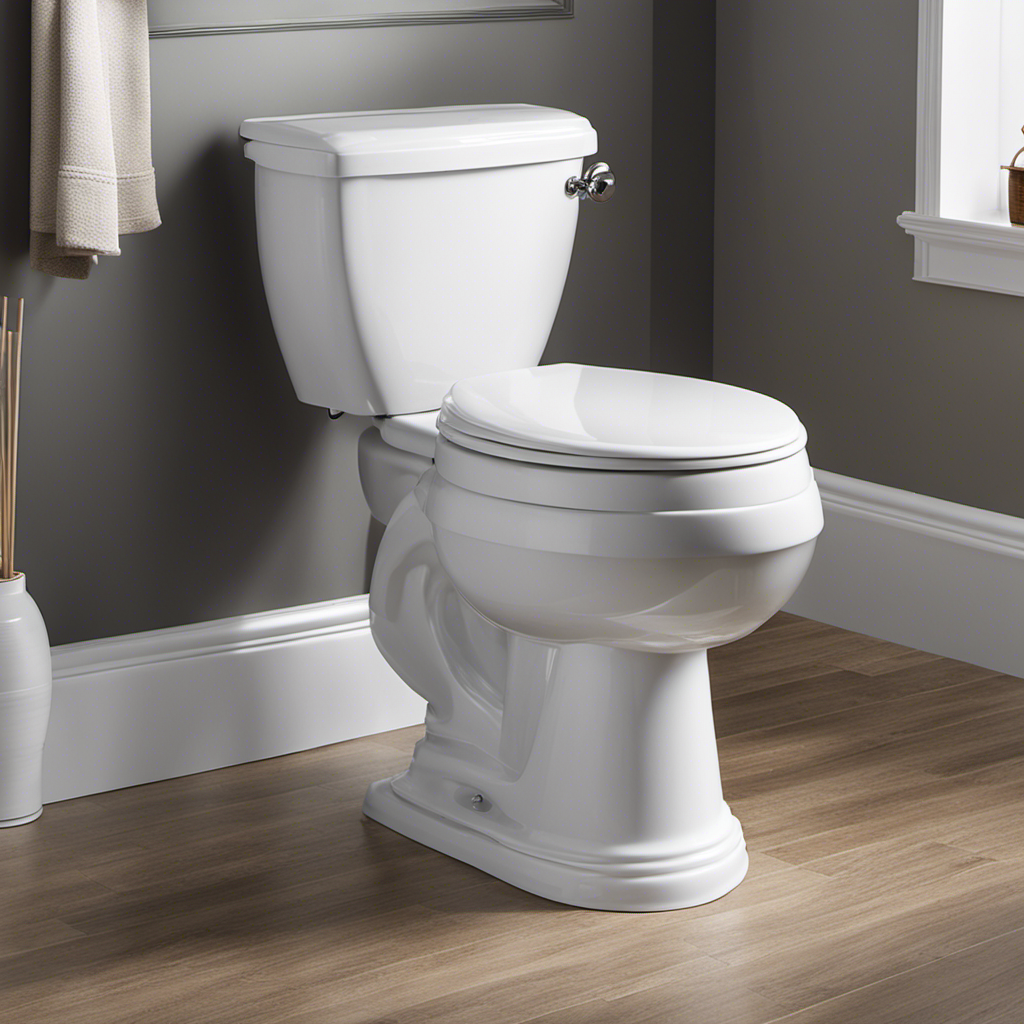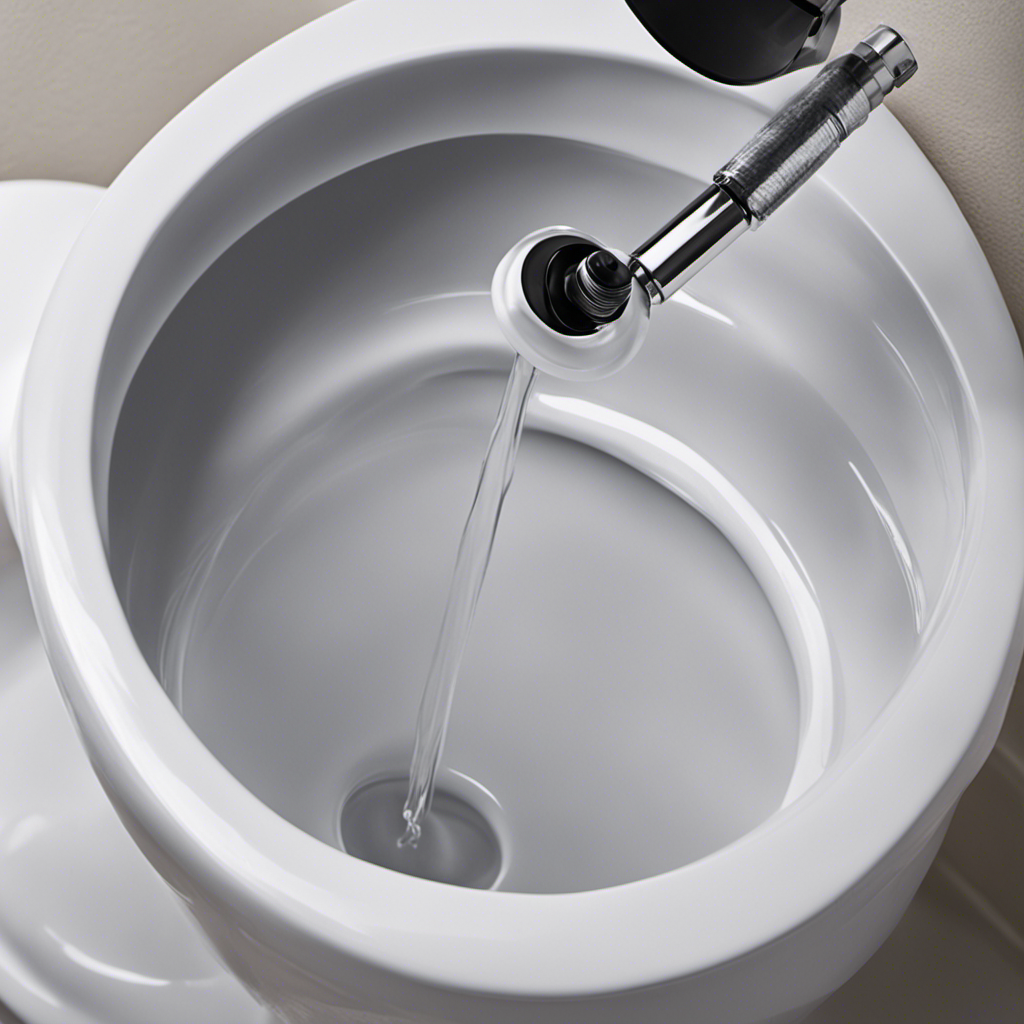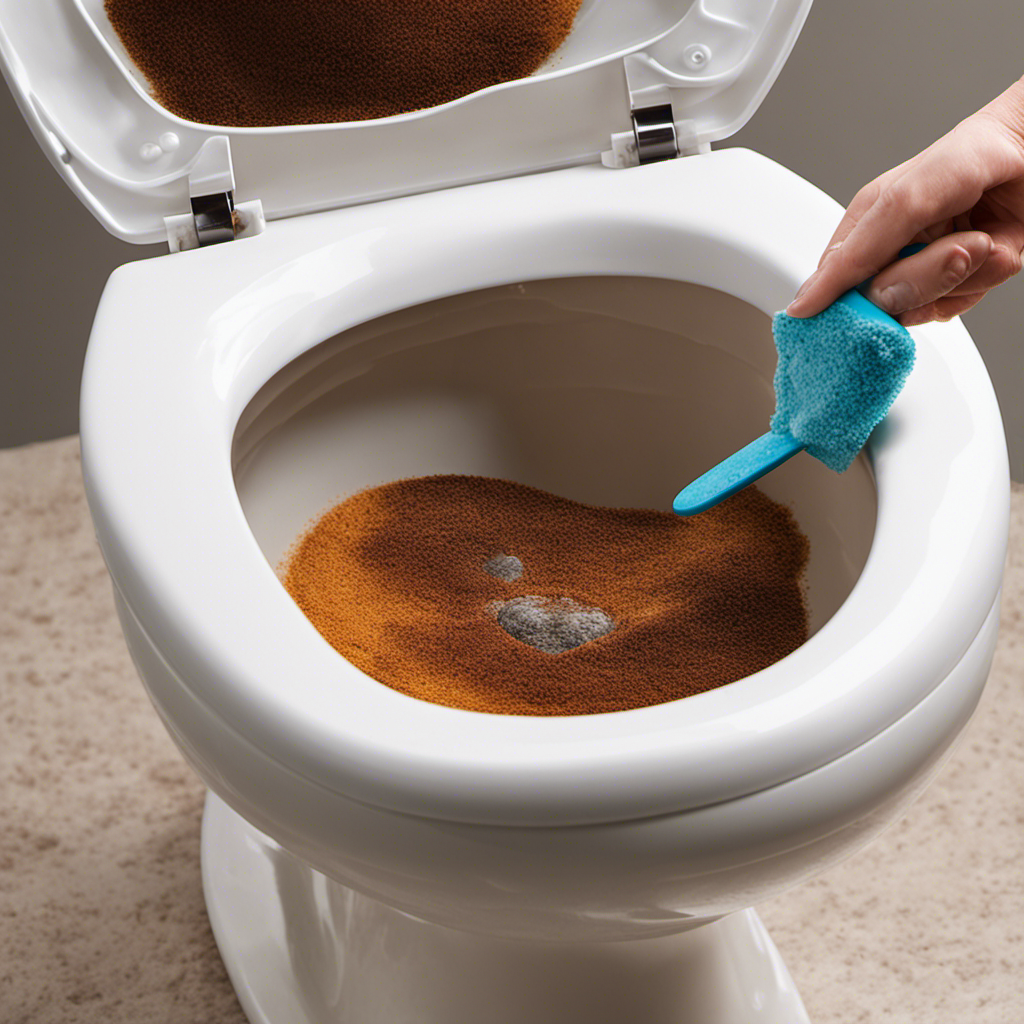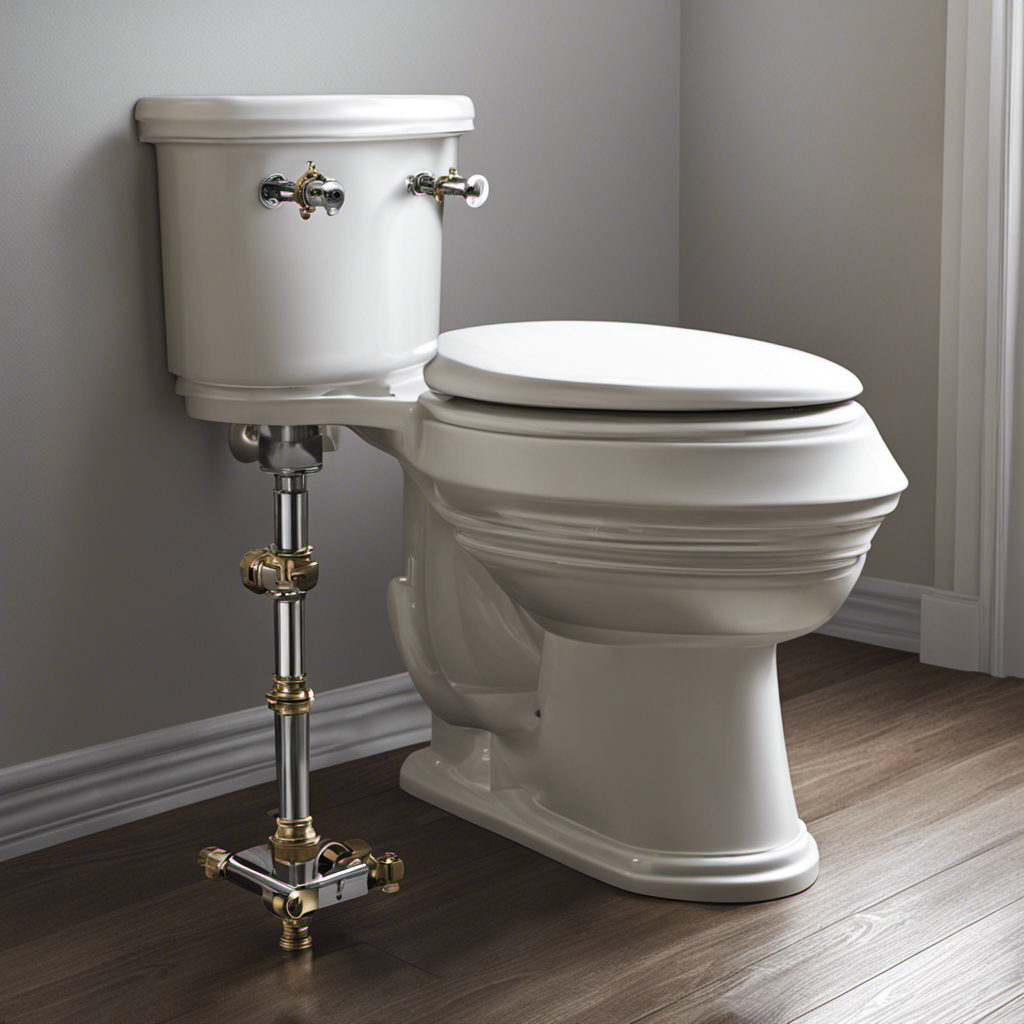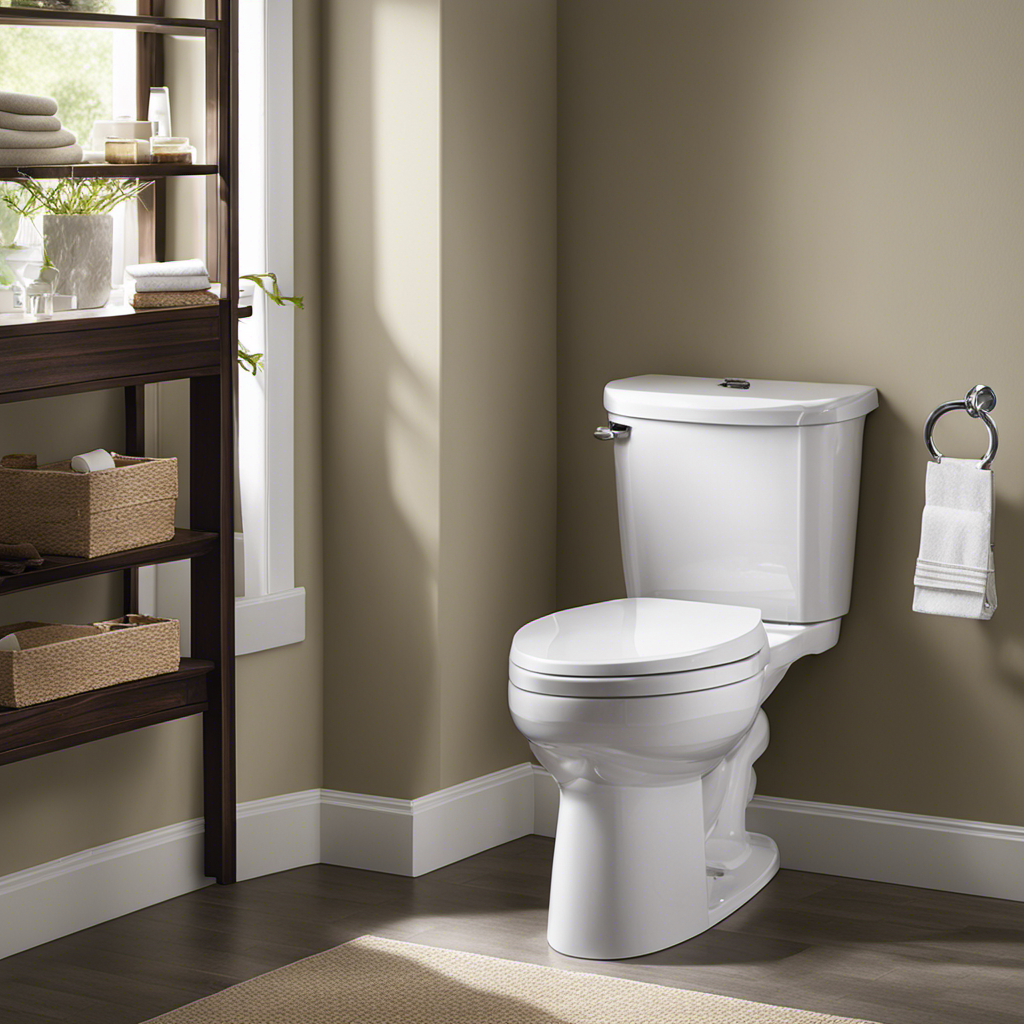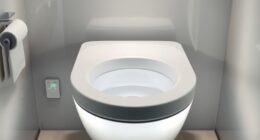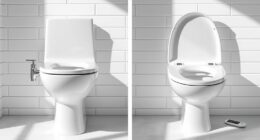Ladies and gentlemen, let us embark on a journey to discover the ultimate solution for a blocked toilet.
Imagine the frustration of a clogged commode, disrupting our daily routine. Fear not, for we have gathered the most effective remedies to alleviate this troublesome predicament.
From plungers to enzyme-based drain cleaners, we shall explore the arsenal of options at our disposal.
Trust in our expertise as we guide you towards mastery in the art of unclogging toilets.
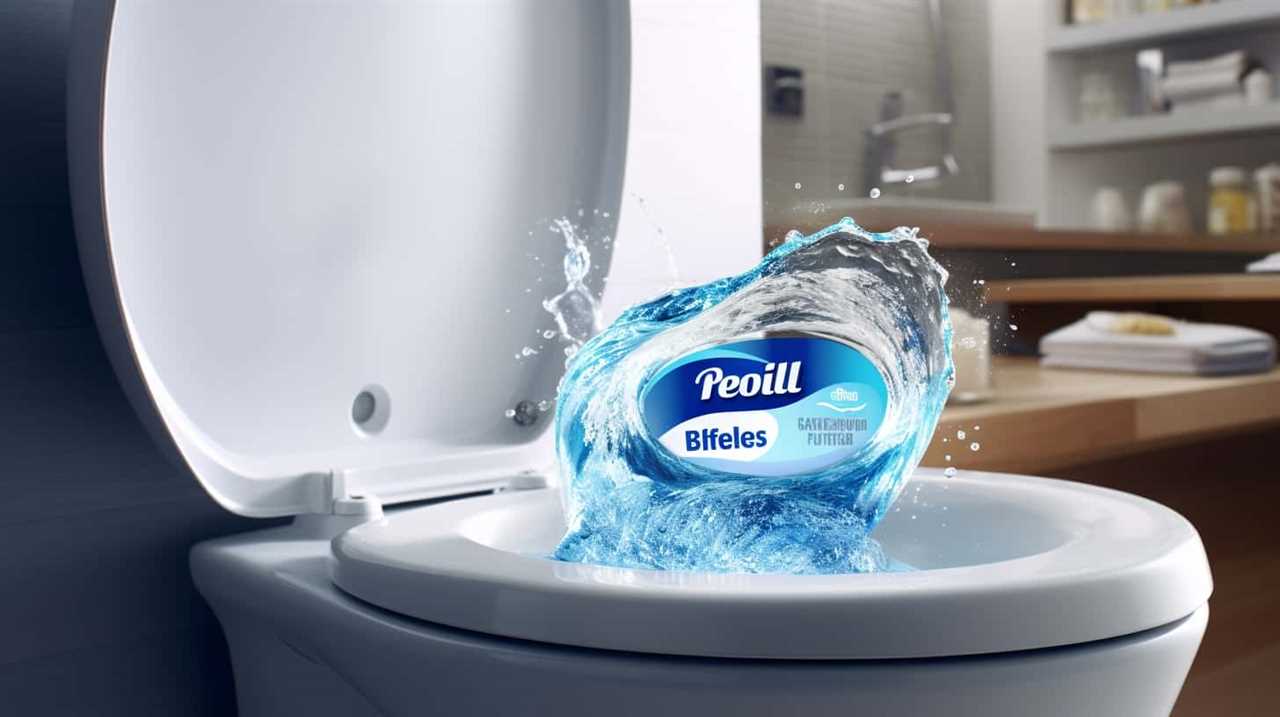
Key Takeaways
- Plungers are simple yet effective tools for clearing blocked toilets and should be the first line of defense.
- Toilet augers are specialized tools that can reach deep into the toilet trap and are a cost-effective alternative to calling a plumber.
- Baking soda and vinegar create a fizzy reaction that breaks down clogs and is an eco-friendly and affordable solution.
- Using hot water and dish soap can effectively dissolve clogs and is popular among environmentally conscious individuals.
Plunger
We recommend using a plunger to clear a blocked toilet. A plunger is a simple yet effective tool that can help dislodge clogs in your toilet.
To use a plunger, place the rubber cup over the drain hole and push down firmly, creating a seal. Then, rapidly push and pull the plunger to create suction and pressure, which can help to break up the blockage and allow water to flow freely again.
It’s important to use a plunger specifically designed for toilets, as they have a flange that helps create a better seal.
Using a plunger is often the first line of defense when dealing with a blocked toilet, before resorting to more aggressive methods such as using a toilet brush or chemical cleaner.
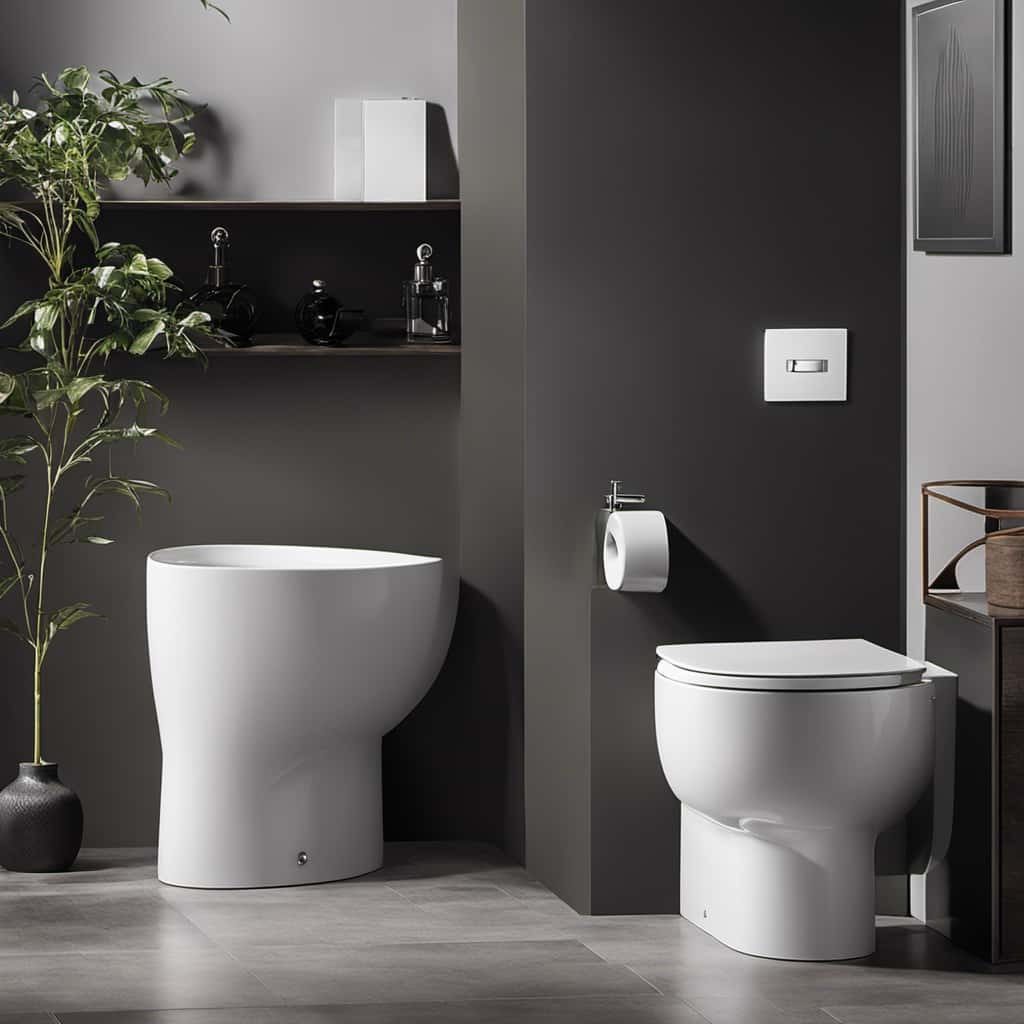
Toilet Auger
Moving on from using a plunger, another effective tool for clearing a blocked toilet is a toilet auger. A toilet auger, also known as a closet auger, is a specialized tool designed to break up and remove stubborn clogs in the toilet drainpipe.
It consists of a long, flexible cable with a coiled end and a handle. The benefits of using a toilet auger include its ability to reach deep into the toilet trap and break up clogs that a plunger can’t handle.
To use a toilet auger effectively, start by inserting the coiled end into the toilet bowl and turning the handle clockwise to feed the cable into the drainpipe. Once the auger reaches the clog, continue turning the handle to break it up and then retract the cable to remove the debris.
Toilet augers are a valuable tool for homeowners who want to take control of their clogged toilets and avoid costly plumbing bills.
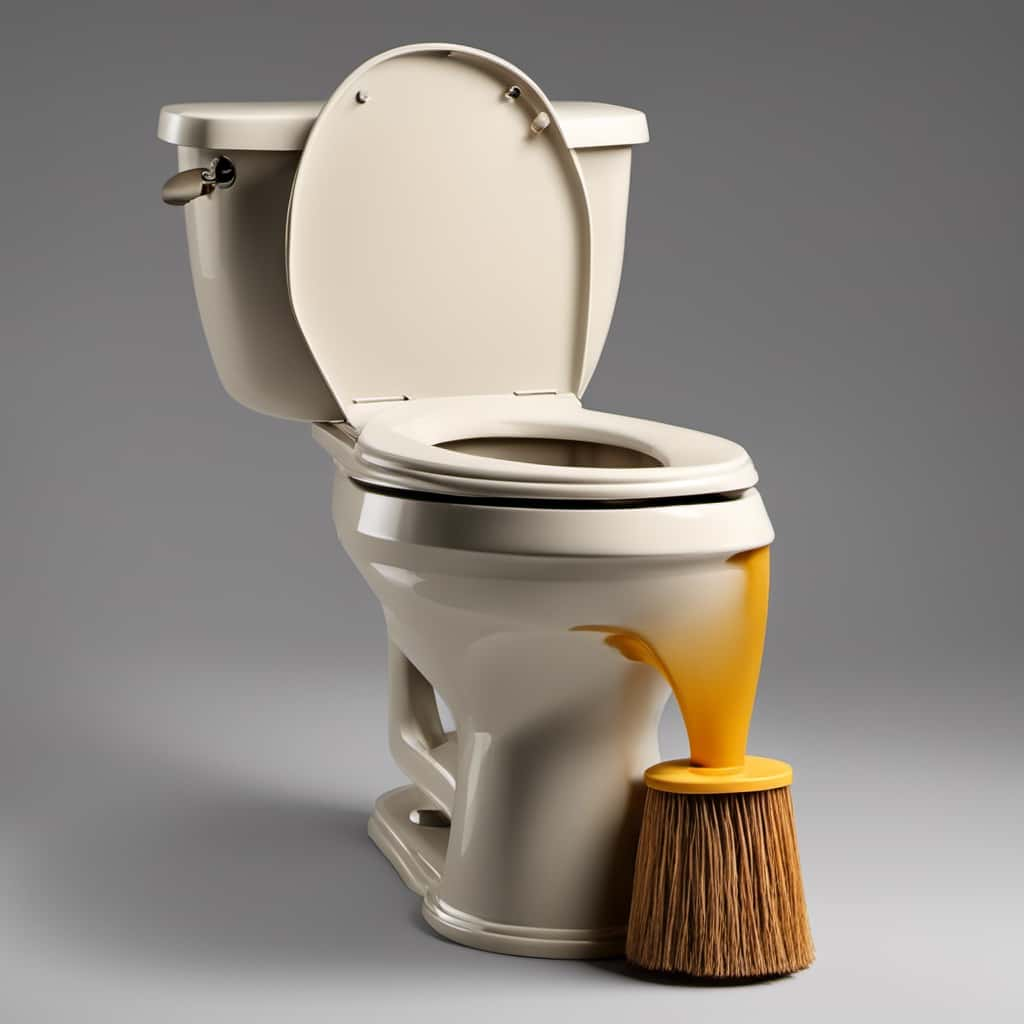
Baking Soda and Vinegar
To continue addressing clogged toilets, another effective method involves the use of baking soda and vinegar. This natural remedy can be highly effective in clearing blockages and preventing further plumbing issues. Here are four reasons why baking soda and vinegar are a great solution for a blocked toilet:
- Baking soda benefits: Baking soda has excellent cleaning properties and can help break down stubborn clogs. It’s also a natural deodorizer, leaving your toilet smelling fresh and clean.
- Vinegar uses: Vinegar is a powerful cleaning agent that can dissolve mineral deposits and remove grime from the pipes. Its acidic properties can also help to break down blockages and keep your toilet functioning properly.
- Chemical reaction: When baking soda and vinegar are combined, they create a fizzy reaction that can help dislodge the clog. This reaction can effectively break down any debris and clear the blockage.
- Eco-friendly and cost-effective: Baking soda and vinegar are natural, non-toxic alternatives to harsh chemicals. They’re also readily available and affordable, making them a budget-friendly option for clearing a blocked toilet.
Using baking soda and vinegar is a simple yet powerful solution for clearing a blocked toilet. Give it a try and experience the benefits of this natural remedy.
Hot Water and Dish Soap
Continuing with our discussion on effective methods to clear a blocked toilet, another option to consider is using hot water and dish soap. This method isn’t only effective but also eco-friendly, making it a popular choice among those who prefer environmentally friendly alternatives.
To use this method, start by pouring a generous amount of dish soap into the toilet bowl. Let it sit for a few minutes to allow the soap to break down the blockage.

Next, carefully pour hot water into the bowl. The combination of the hot water and dish soap will help to dissolve the clog and clear the toilet.
Enzyme-Based Drain Cleaner
An effective option for clearing a blocked toilet is to use an enzyme-based drain cleaner. Enzyme-based drain cleaners are a popular choice for several reasons:
- Environmentally friendly: Unlike harsh chemical cleaners, enzyme-based drain cleaners are biodegradable and safe for the environment.
- Multi-purpose: In addition to unclogging toilets, enzyme-based drain cleaners can be used for other household cleaning tasks. They can remove grease, hair, and other organic matter from drains.
- Safe for pipes: Enzyme-based drain cleaners are gentle on pipes and won’t cause damage or corrosion, making them a long-term solution for maintaining a healthy plumbing system.
- Choosing the right product: When selecting an enzyme-based drain cleaner, consider the type of blockage you’re dealing with. Some cleaners are specifically formulated for hair clogs, while others are better for grease or food particles.
Frequently Asked Questions
Can I Use a Plunger on a Blocked Toilet if I Don’t Have a Toilet Auger?
Using a plunger is a common and effective method to clear a blocked toilet. If a toilet auger is unavailable, alternative methods include using hot water, dish soap, or a homemade drain cleaner.
Is It Safe to Use Baking Soda and Vinegar in a Toilet if I Have a Septic System?
Using baking soda and vinegar in a septic system can be risky. Instead, try using a toilet auger or a drain snake to clear a blocked toilet. These alternatives are safer and more effective.
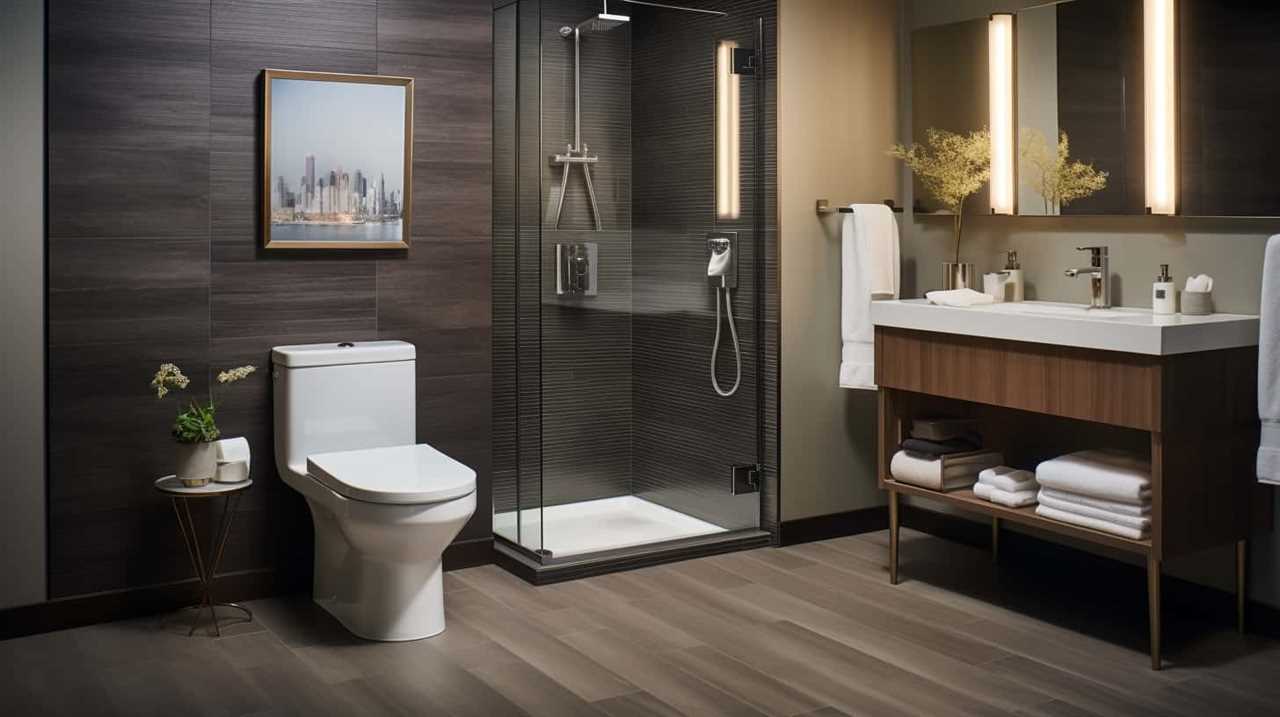
Can Hot Water and Dish Soap Alone Effectively Clear a Blocked Toilet Without the Need for Additional Tools?
Hot water and dish soap alone can effectively clear a blocked toilet without additional tools. However, using baking soda and vinegar may provide better results. If needed, a plumber snake can be used as an alternative to a toilet auger.
How Long Should I Wait After Using an Enzyme-Based Drain Cleaner Before Flushing the Toilet Again?
Using enzyme-based drain cleaner on a blocked toilet, we should wait at least 24 hours before flushing again. This allows the cleaner to effectively break down the blockage and ensures a thorough clearing of the toilet.
Are There Any Potential Risks or Side Effects Associated With Using a Toilet Auger to Clear a Blocked Toilet?
When using a toilet auger to clear a blocked toilet, there are potential risks and side effects to consider. It’s important to be cautious and follow proper instructions to avoid injury or damage to the plumbing system.
Conclusion
In conclusion, when dealing with a blocked toilet, there are several effective methods to choose from.
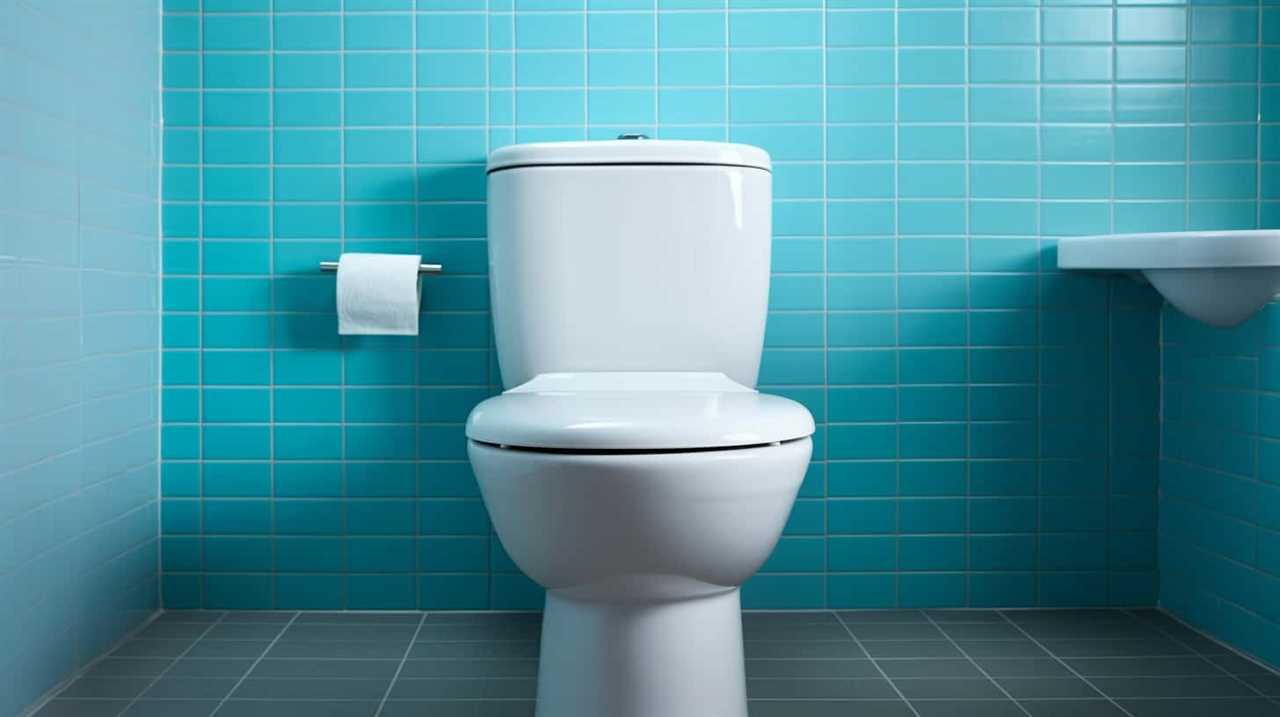
Whether it’s using a plunger to create pressure, a toilet auger to break up clogs, or utilizing baking soda and vinegar for a natural solution, there are options available.
Additionally, hot water and dish soap can help dissolve blockages, and enzyme-based drain cleaners are another effective choice.
With these tools at your disposal, you can easily tackle any toilet blockage and restore proper functionality, leaving you with a clear and problem-free toilet.

